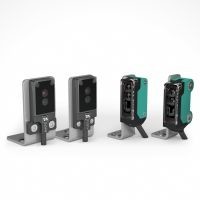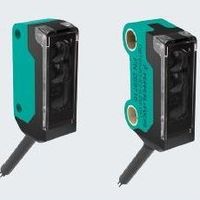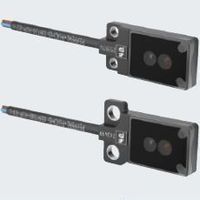Maximum Precision with Efficient Engineering
The R2, R3, and R2F, R3F series miniature photoelectric sensors

Increase efficiency with our miniature photoelectric sensors!
Pepperl+Fuchs‘ portfolio of miniature photoelectric sensors combines four housing designs, three sensing modes, and two powerful technologies. This variety allows unique flexibility when choosing a sensor for your particular application. In addition to the compact R2 and R3 series, the flat profile R2F and R3F series are a good fit for applications where high precision in small spaces is required. The standard product design also enables cost-saving and time-saving engineering.
Smallest sensors and largest selection
The R2 and R3 series and the flat profile R2F and R3F series miniature photoelectric sensors only differ in their housing design. Space-saving models with M2 mounting, and standard versions with M3 mounting are available. Users get the same photoelectric functional principles within each series—from thru-beam and retroreflective to diffuse mode with background suppression. LED and DuraBeam are options in every one of these sensors. With this much sensor variety, users can solve a wide range of applications in tight spaces of less than 200 mm. Typical application examples are:
- Presence monitoring
- Object tracking
- Small part detection
- Leading edge detection
- Object counting
- Counting of small parts on guided feeding systems
R2 and R3 series—tough miniature sensors

R2 and R3 series miniature photoelectric sensors
While traditional miniature sensors are equipped with plastic fronts, the R2 and R3 series photoelectric sensors have an abrasion-resistant, antistatic glass front. This allows sensors to be mounted close to moving parts. They perform reliably even in dusty environments. Due to their 45° angled cable outlet, these photoelectric sensors can be easily mounted.
R2F and R3F series—power packed into a flat housing design

R2F and R3F series miniature photoelectric sensors
The front-mounted R2F and R3F series represent the flat variants in Pepperl+Fuchs‘ portfolio of photoelectric miniature sensors. Equipped with DuraBeam lasers, they are the world’s flattest laser sensors. The innovative DuraBeam laser technology combines the advantages of LED and laser sensors and ensures the highest precision for small parts detection.
Highlights of miniature photoelectric sensors
- A comprehensive family of miniature photoelectric sensors makes it easy to design the perfect solution for a wide range of applications
- Innovative DuraBeam laser technology for increased durability and a wide operating temperature range
- Diffuse mode sensors with true background suppression reliably detect objects while ignoring the background
- Retroreflective sensors reduce wiring costs and offer a cost-effective alternative to thru-beam sensors
- Abrasion-resistant and antistatic glass front provides durability against occasional contact and prevents dirt and dust accumulation







 +420 225 989 180
+420 225 989 180